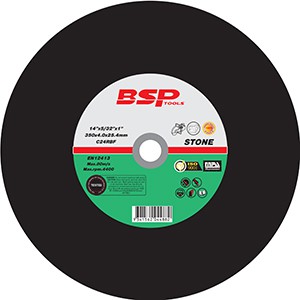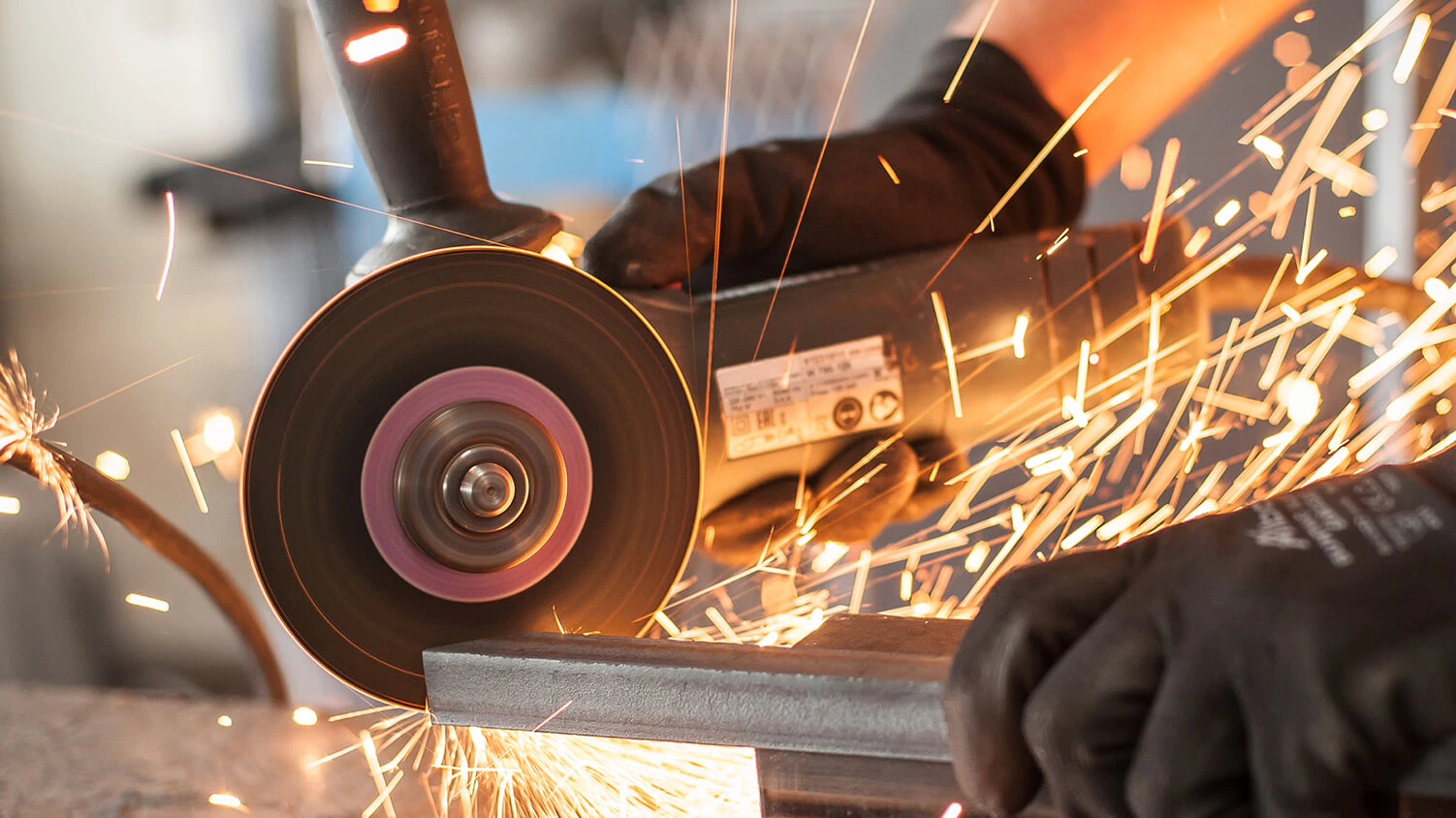What is a cut off wheel?
A cut-off wheel is a type of abrasive tool that is used for cutting various materials, such as metals, plastic, ceramics, and others. It is a thin, circular blade that rotates at high speeds and is made from an abrasive material, such as aluminum oxide or silicon carbide. The cutting edge of a cut-off wheel is typically coated with abrasive grains, which cut into the material being worked on as the wheel rotates.
Cut-off wheels are commonly used in a variety of industrial applications, such as metalworking, plumbing, and construction. They can be used to cut through metal pipes, bars, rods, and sheets, and are also used to trim and shape other materials, such as ceramics and stone. The size, shape, and abrasive type of cut-off wheel will vary depending on the specific application, with some wheels designed for heavy-duty cutting and others for more precise cuts.
It is important to note that cut-off wheels can be dangerous if used improperly. They can break or shatter, causing serious injury or damage. Always follow the manufacturer’s instructions and safety precautions when using cut-off wheels, and wear appropriate protective equipment, such as eye protection and gloves.
What are cut off wheels made from?
Cut off wheels are made from a mixture of abrasive grains, such as aluminum oxide or silicon carbide, and bonding agents, such as resin. They are typically circular in shape and have a thin profile, which allows them to make precise cuts through tough materials.
Cut off wheels are typically mounted on angle grinders or chop saws and are used for tasks such as cutting metal pipes, rods, and sheets, as well as for removing rusted bolts and nuts.
There are several types of cut off wheels available in the market. Each type of cut off wheel is designed for specific cutting applications, based on factors such as the thickness of the wheel, the type of abrasive grain used, and the size of the wheel.
Here are some of the most common types of cut off wheel
Extra Thin Cut Off Wheels:
Extra thin cutoff wheels are thin and flexible abrasive disc designed for making precise cuts in thin material, such as sheet metal or electrical conduit. They have a very thin profile, which helps to minimize material deformation and to reduce the likelihood of warping.
Thin Cut Off Wheels:
Similar to extra thin cut off wheels, thin cut off wheels are designed for making precise cuts in thin material, but have a slightly thicker profile.
Mini Cut Off Wheels:
These are smaller in size than standard cut off wheels and are designed for use in tight spaces or for making precision cuts. They are typically mounted on mini angle grinders or die grinders
Metal Cut Off Wheels:
These are designed for cutting metal and are made from a mixture of abrasive grains and bonding agents that are capable of cutting through a range of metal alloys.
Aluminum Cut Off Wheels:
These are designed specifically for cutting aluminum and are made from a mixture of abrasive grains that are suitable for cutting this soft metal.
Stone Cut Off Wheels:
These are designed for cutting stone, concrete, and masonry materials and are made from a mixture of abrasive grains and bonding agents that are capable of cutting through hard materials.
Large Cut Off Wheels:
These are designed for making cuts in larger materials, such as metal pipes, rods, and sheets. They are typically larger in diameter than standard cut off wheels and are used with large angle grinders or chop saws.
Grinding Cut Off Wheels:
These are designed for both cutting and grinding applications, and have a slightly thicker profile than standard cut off wheels. They are typically used for removing rust, paint, or other surface coatings.Click www.binictools.com to know more about cutting off wheels.
Application scenario and industry of different cut off wheels
- Extra Thin Cutoff Wheels: Commonly used in metal fabrication, electrical work, and plumbing. They are used in industries such as automotive, aerospace, and construction.
- Thin Cutoff Wheels: Used in a similar manner as extra thin cutoff wheels and used in metal fabrication, electrical work, and plumbing. They are used in industries such as automotive, aerospace, and construction.
- Mini Cutoff Wheels: Used in electronics repair, hobby and craft work, and for making cuts in small materials. They are used in industries such as jewelry making, watch repair, and model making.
- Metal Cutoff Wheels: Used in metal fabrication and metal cutting industries such as metalworking, metal recycling, and machinery repair. They are used in industries such as construction, automotive, and aerospace.
- Aluminum Cutoff Wheels: TUsed in metal fabrication and metal cutting industries, specifically for cutting aluminum and other non-ferrous metals. They are used in industries such as construction, automotive, and aerospace.
- Stone Cutoff Wheels: Used in the construction and masonry industries for cutting stone, concrete, and masonry materials.
- Large Cutoff Wheels: Used in metal cutting and pipe cutting industries, such as construction and machinery repair.
- Grinding Cutoff Wheels: Used in metalworking and machinery repair industries for deburring and cleaning up metal parts. They are used in industries such as construction, automotive, and aerospace.
Factors should be noticed when using different cut off wheels
- Material: Ensure that the cut-off wheel you are using is suitable for the material you are cutting. For example, using a metal cut-off wheel on a stone material can cause the wheel to break or the material to crack.
- Wheel Thickness: The thickness of the wheel should match the thickness of the material being cut. Thicker wheels are better suited for thicker materials, while thin wheels are better suited for thin-walled materials.
- Cutting Speed: The speed at which the wheel is cutting should be within the manufacturer’s recommended range. Excessive speed can cause the wheel to overheat, reducing its lifespan and potentially leading to wheel failure.
- Wheel Condition: Regularly inspect the wheel for signs of damage, such as cracks, chips, or abrasions. If the wheel is damaged, it should be replaced before using it to prevent injury and damage to the material being cut.
- Machine Compatibility: Make sure the cut-off wheel is compatible with the machine you are using. Different machines may have different speed requirements, so it’s important to check the manufacturer’s specifications.
- Safety Equipment: Always wear proper safety equipment, such as eye protection and gloves, when using a cut-off wheel. Flying debris and sparks can cause injury, so it’s important to take precautions to protect yourself.
- Proper Installation: Make sure the cut-off wheel is properly installed on the machine, with the correct side facing out. Installing the wheel incorrectly can cause it to come loose or break during use, leading to injury and damage.
Maintenance of cut off wheels
Proper maintenance is essential for ensuring that cut off wheels perform well and last for a long time. The following are some tips for maintaining cut off wheels:
- Proper storage: Cut off wheels should be stored in a dry, cool, and well-ventilated area to prevent moisture and corrosion. The wheels should also be stored away from any sources of heat or sparks to prevent accidental ignition.
- Regular inspection: Cut off wheels should be regularly inspected for cracks, chips, or any other signs of damage. If a wheel is damaged, it should be replaced immediately to prevent accidents.
- Cleaning: Cut off wheels should be regularly cleaned to remove any debris or build-up that could interfere with their performance. This can be done using a brush or a compressed air nozzle.
- Proper use: Cut off wheels should only be used for their intended purpose, and they should be used in accordance with the manufacturer’s recommendations. This includes using the right type of wheel for the material being cut, using the right machine and speed, and wearing appropriate protective equipment.
- Safe handling: Cut off wheels should be handled with care to prevent accidents. This includes using proper lifting techniques, avoiding dropping the wheels, and avoiding contact with sharp edges.
- Regular replacement: Cut off wheels should be replaced regularly to ensure their optimal performance. The frequency of replacement will depend on the amount of use and the type of material being cut, and should be based on the manufacturer’s recommendations.
Conclusion
Cut off wheels are a type of abrasive cutting tool that are used in a variety of industries for cutting and grinding different materials, including metals, stones, and ceramics. There are several different types of cut off wheels, including extra thin, thin, mini, metal, aluminum, stone, large, and grinding cut off wheels. Each type of wheel has its own specific applications and industries, and it is important to take into consideration various factors, such as machine balance and speed, and the use of protective equipment, when using these tools. By understanding the different types of cut off wheels and the factors to consider when using them, individuals and businesses can ensure that they are using the right tool for their cutting and grinding needs and that they are using these tools safely and effectively. Maintenance is essential to keep you cut off wheel in good condition and scale up.
want to know more? click to visit our website and quote for us at www.binictools.com








